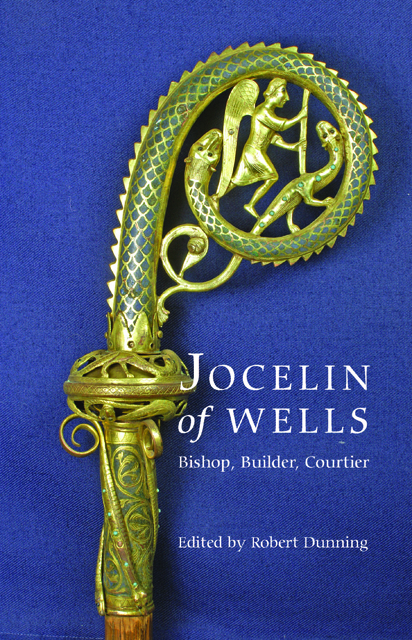5 - Jocelin of Wells as a palace builder
Published online by Cambridge University Press: 02 March 2023
Summary
When Jocelin became bishop of Wells in 1206, cathedral building-work on a huge scale had been taking place in England for a century or so. Starting with Canterbury in 1071, some extraordinary new buildings were erected which evolved rapidly from the fairly crude but often massive Romanesque buildings of the later eleventh century to the wonderful early Gothic ribvaulted structures of the later twelfth century. At Wells itself a magnificent new cathedral (started in c.1175) was nearing completion, with its eastern arm, if not its nave, ready for use. Alongside this work, but less well known because most of the buildings are now much less well preserved, the bishops were putting up fine official residences for themselves, which by the late twelfth century can often be called ‘palaces’. These episcopal palaces, which could often be as grand as contemporary royal palaces in England, were almost always situated close to their cathedrals, though most of the bishops also had a series of other, lesser residences at some of the major manors that they owned.
In the early thirteenth century most bishops put up, for the first time, fine new residences in London as well, so that they could be near the developing royal court at Westminster. Many of their London houses were situated on the Thames littoral, still known as the Strand, between the royal palace at Westminster and the city. Two of the most important, the residences of the archbishop of Canterbury and the bishop of Winchester, were, however, already well established on the south bank of the Thames before 1200 at Lambeth4 and Southwark. By the later Middle Ages all bishops spent much of their time travelling around their dioceses and between their cathedral palaces and their London ‘inns’, as they were often later called, via a series of other manorial residences. The later medieval and early Tudor bishops of Bath and Wells lived at Bath Inn until 1545 (later it became Arundel House) on the Strand, when they were in London. This site had been granted to Bishop Jocelin by the bishop of London between 1221 and 1228, and in 1232 Jocelin gave it to his successors in the see of Bath and Wells ‘together with all houses and buildings there on’.
- Type
- Chapter
- Information
- Jocelin of WellsBishop, Builder, Courtier, pp. 101 - 109Publisher: Boydell & BrewerPrint publication year: 2010

